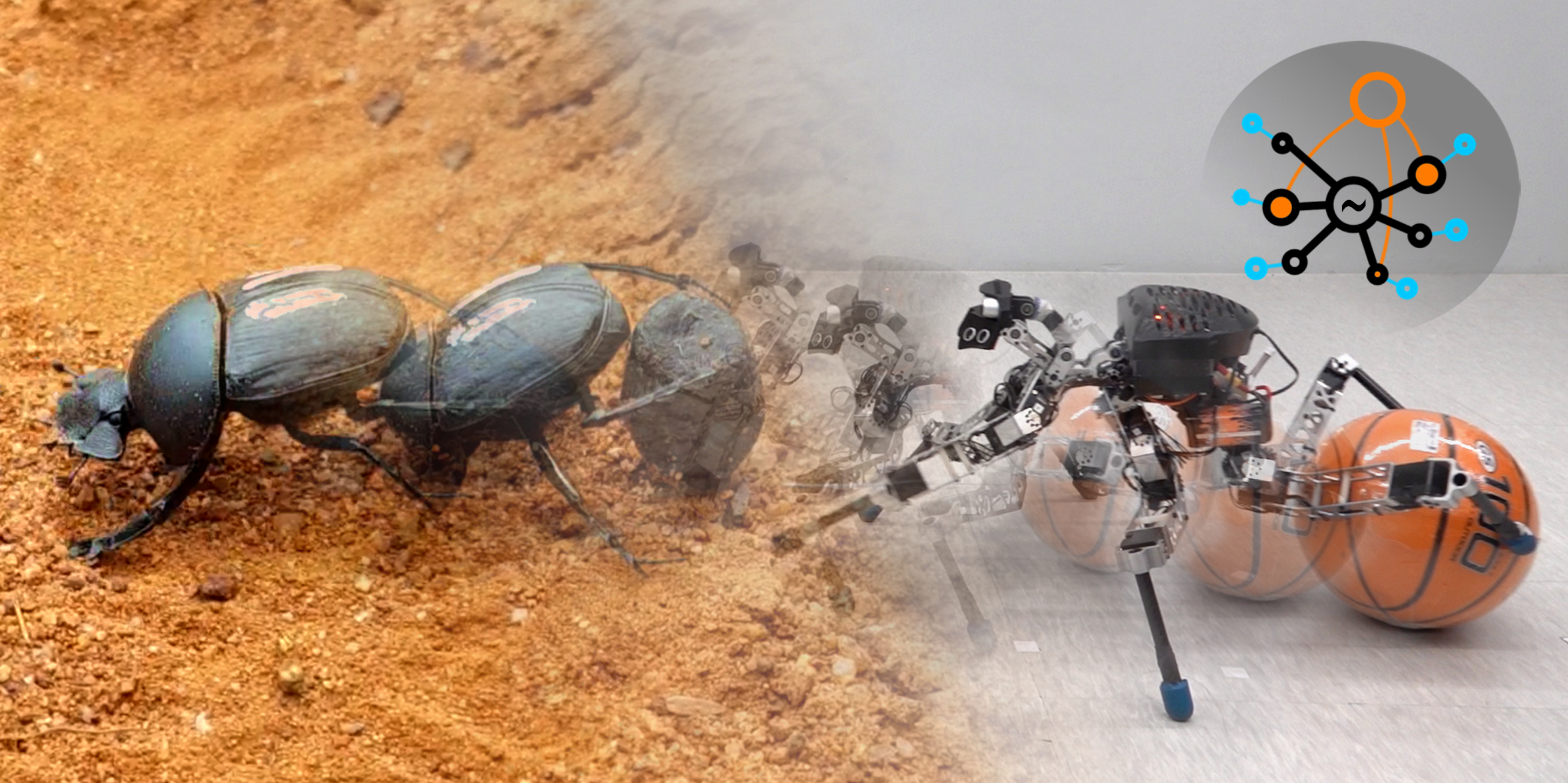Currently, most existing multi-legged robots or insect-like robots mainly use their legs to perform locomotion. Only a few of them can use their legs for both locomotion and object transportation, but they are still limited to specific small and medium-sized object types (10–65% of leg length) on flat terrain and lack leg adaptation to deal with uneven terrain while performing object transportation. To extend the capabilities of the existing insect-like robot technology, the Research Grant Awardees learned from dung beetles “how they efficiently use their legs to adaptively walk and naturally transport pallets” and developed neural control, mimicking the pallet transportation behavior of the beetle, for a dung beetle-like robot.

The bio-inspired control approach was synthesized based on modular neural mechanisms that integrate 1) central pattern generator CPG-based control for basic locomotion generation, 2) adaptive local leg control with memory neuron and synaptic plasticity mechanisms for locomotion adaptation over complex terrains, 3) descending modulation control for omnidirectional locomotion generation (forward/backward walking, left/right curve walking, and left/right turning), and 4) object manipulation control for object manipulation using legs. The object manipulation control enables the hind legs to grasp various objects (Strategy 1), such as a hard ball and a cardboard box, while also applying an oscillation movement to the hind legs (Strategy 2) to transport a softball on even and uneven terrains. A combination of these neural and morphological computations in the dung beetle-like robot results in motion intelligence for traversing and transporting objects. Specifically, it allows the robot to perform versatile locomotion and use its legs to transport hard and soft objects of various sizes (60%–70% of leg length) and weights (approximately 3%–115% of robot weight) on both flat and uneven terrains.
The proposed control approach can provide a new perspective for solving the object transportation problem in insect-like robots. This will push the boundaries of robots to perform object transportation in real applications such as construction, by using their legs. In addition, it can be used as a basis for investigating and integrating new behavioral control (i.e., large ball rolling or large object transportation). This study also suggests possible neural mechanisms underlying the versatile locomotion and object transportation of dung beetles which currently remain unknown.
This work was carried out by researchers from the Vidyasirimedhi Institute of Science and Technology (Thailand) and the University of Southern Denmark (Denmark) led by Poramate Manoonpong. The research was performed in collaboration with Kiel University (Germany), Stockholm University (Sweden), and Lund University (Sweden). The support of HFSP under the Dlife project played a significant role in this research work. It has been instrumental in achieving the findings which can set a new direction for bio-inspired robotics research. The developed integrated neural control mechanisms and the dung beetle robot ALPHA can potentially be utilized as materials for biological investigations (robotics-inspired biology).


































